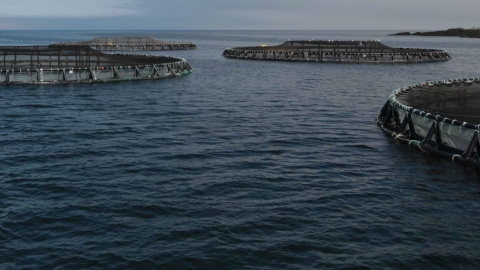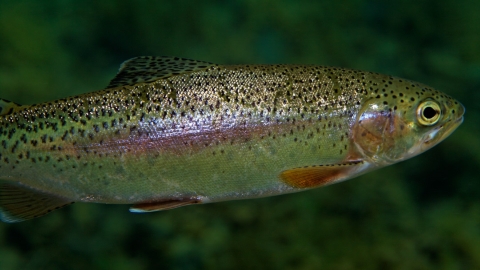
Farmed Atlantic salmon may be safer on the plate today than it was 15 years ago, but its nutritional profile has changed — notably, with lower levels of beneficial omega-3 fatty acids, according to a major 16-year study published in the Journal of Agriculture and Food Research.
The research, led by Norway’s Institute of Marine Research, monitored nearly 7,000 salmon fillet samples and over 900 samples of commercial feed between 2006 and 2021. Its aim was to understand how changes in feed composition — particularly the shift from marine-based to plant-based ingredients — have affected the fish we eat.
“In the 1990s, nearly 90% of the feed was composed of marine protein sources and oils, whereas only 22% was of marine origin in 2020, and plant ingredients accounted for over 60% of the salmon feed,” the study notes.
This shift in diet has led to a marked decline in marine-derived nutrients in farmed salmon. “A portion of 150 grams of salmon fillet amounted to 1303% of the Adequate Intake for EPA and DHA in 2006; for the years 2014–2021, that figure fell to 683%,” the researchers reported.
This means that although farmed salmon remains a rich source of omega-3 fatty acids, its content has nearly halved over the past 15 years due to changes in feed composition.
The study also reports decreases in other important nutrients. Vitamin D content, for example, dropped from 0.091 mg/kg in 2006 to 0.076 mg/kg during the 2014–2021 period, while selenium levels also declined.
At the same time, fatty acids commonly found in vegetable oils — such as oleic, linoleic, and alpha-linolenic acids — have increased. Oleic acid, for instance, now makes up 39% of the total fatty acids in farmed salmon fillet, compared with just 23% in 2006.
However, the researchers emphasise that this nutritional shift has come with a significant food safety benefit. “The concentration of several contaminants, including polychlorinated dibenzo-p-dioxins and polychlorinated dibenzofurans (dioxins) and dioxin-like PCBs (dl-PCBs), non-dioxin-like indicator PCBs (PCB-6), DDT and mercury, decreased in both feed and salmon fillet.”
In 2006, a standard portion of salmon exceeded the European tolerable weekly intake (TWI) for dioxins. Between 2014 and 2021, the same portion accounted for just 53% of that limit.
Despite the decline in some nutrients, the study concludes that salmon remains a beneficial dietary choice. “Although the level of some of the nutrients decreased, a portion of Atlantic farmed salmon fillet remains a good source of EPA, DHA, vitamin D and selenium.”
Reference:
Rita Hannisdal, Ole Jakob Nøstbakken, Marc H.G. Berntssen, Arne Duinker, Quang Tri Ho, Marian Kjellevold, Annette Bernhard, Livar Frøyland, Amund Maage, Anne-Katrine Lundebye, Nini H. Sissener, Lisbeth Dahl, Robin Ørnsrud, Veronika Sele. Nutrients and contaminants in farmed Atlantic salmon (Salmo salar) fillet and fish feed from 2006 to 2021. Journal of Agriculture and Food Research. Volume 21, 2025, 101933, ISSN 2666-1543, https://doi.org/10.1016/j.jafr.2025.101933



